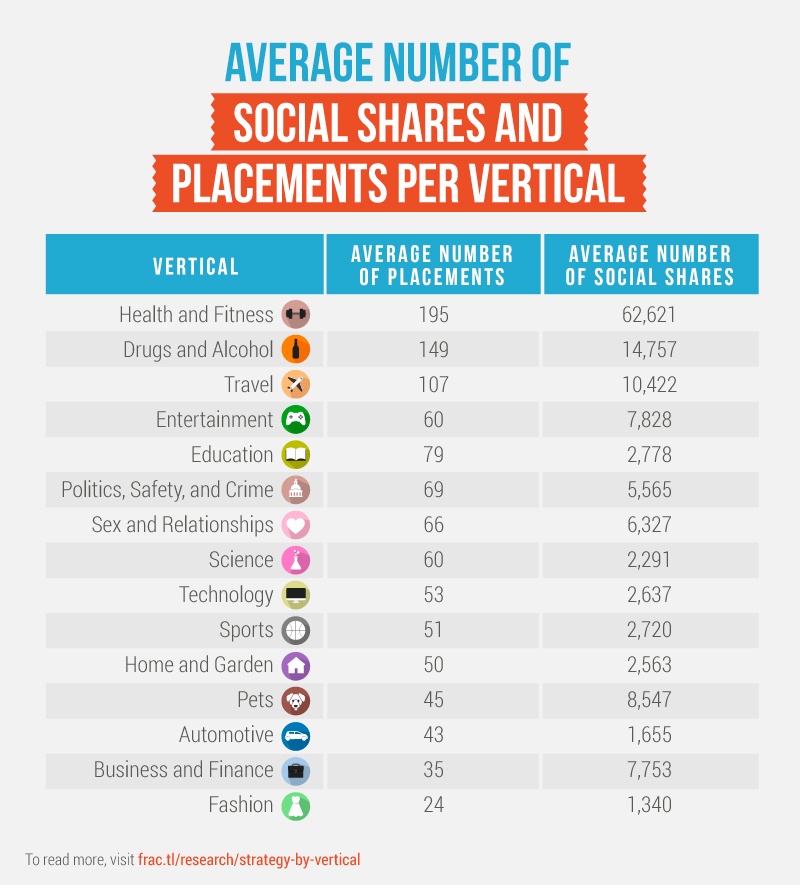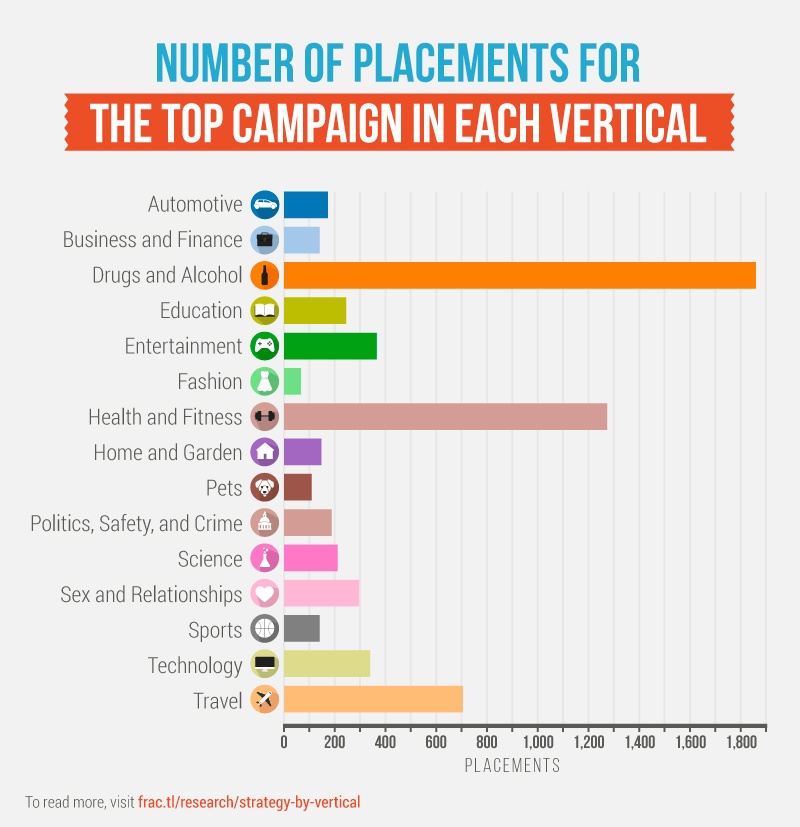Not all content can compete with your average cat video or Kim Kardashian scandal. The hard, cold truth is that the success of a campaign depends largely on its vertical (or category). Although Fashion content may become viral, the average Fashion project won’t receive as much attention as the average Health and Fitness content. It is important to maintain realistic expectations to accurately identify content that is successful, rather than content that falls short.
We previously examined over 300 of Fractl’s campaigns to gain a better understanding of which factors drive content engagement. We found that pop culture references, strong emotional hooks, and comparisons or rankings were especially key. We returned to that same set of projects and looked at which verticals received the most engagement as well as the common factors across top content in each vertical.
Methodology
We looked at a selection of Fractl client content created between 2013 and 2016. Each campaign was categorized into one of 15 different verticals: Health and Fitness; Travel; Education; Entertainment; Drugs and Alcohol; Politics, Safety, and Crime; Sex and Relationships; Business and Finance; Science; Technology; Sports; Automotive; Home and Garden; Pets; and Fashion.
We analyzed each project’s engagement levels (number of placements and social media shares), as well as content characteristics, such as asset type. By “placement,” we are referring to any time a project is mentioned on a publisher’s site (this includes dofollows, cocitations, nofollows, and text attributions).
Placements and Social Shares by Vertical
The average campaign received 90 placements and 11,832 social shares. The average campaign for each vertical, however, looked very different than the overall norm. Verticals with large online followings, such as Travel, largely outperformed the standard campaign on both metrics. Verticals with more niche audiences, such as Home and Garden, had lower levels of engagement.
 |
 |
Health and Fitness, Travel, and Drugs and Alcohol were by far the top-performing verticals. That being said, it’s important to note “results not typical.”
Our campaigns in these categories have such high averages for a few reasons:
- These categories included a few viral campaigns, which skews the averages on the high side.
- These categories are universally appealing topics.
- Our clients’ in these verticals were willing to let us experiment with pushing the envelope, which helped lead to viral success.
Health and Fitness, Travel, and Drugs and Alcohol all had high average placements and high average social shares, but they are not the only verticals creating viral content. When we looked at the number of placements for the top campaign in each vertical, we found that it is possible to create viral content in other areas, such as Sex and Relationships and Technology.
What Does It Takes to Create Top-Performing Content in Each Vertical?
Although Home and Garden content may be harder to grow than projects in Drugs and Alcohol, there are tips and tricks that can make content in every vertical pop. Below, we’ve distilled our findings by industry.
Interested in learning more about how Fractl drives success? Discover what it’s like to work with a best-in-class content marketing agency.





